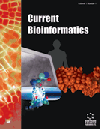
Full text loading...

Pre-mRNA alternative splicing (AS) is a prevalent phenomenon in mammals, playing a crucial role in various biological processes such as embryonic development, tissue differentiation, and disease pathogenesis. Despite the advancements in single-cell RNA sequencing (scRNA-seq) technology, the extent of AS heterogeneity at the transcript level during early mouse embryonic development remains largely unexplored.
The BRIE2 and expedition were employed to identify and quantify splicing events. Cell clustering was performed with Scanpy based on Percent Spliced In (PSI) values and gene expression levels. Then, marker AS events and differential AS events were detected by the Wlicocon rank-sum test and BRIE2's Mode-2 quantification mode. GO and KEGG enrichment analysis were conducted by ClusterProfiler.
The results suggested substantial heterogeneity in AS events and elucidated PSI values as a critical index of cell heterogeneity during early mouse embryonic development, shedding light on the regulatory mechanisms underlying these processes. By examining marker and differential AS events, the study provided a comprehensive understanding of the dynamic changes in splicing patterns throughout early mouse embryonic development.
This study revealed the heterogeneity of AS and elucidated its implications during early mouse embryonic development by analyzing AS at the single-cell level. However, the results are theoretical and lack experimental validation.
The findings offer critical insights into studying mouse embryonic development from the perspective of RNA cellular heterogeneity, emphasizing the importance of AS in shaping cellular diversity and developmental processes.

Article metrics loading...

Full text loading...
References


Data & Media loading...